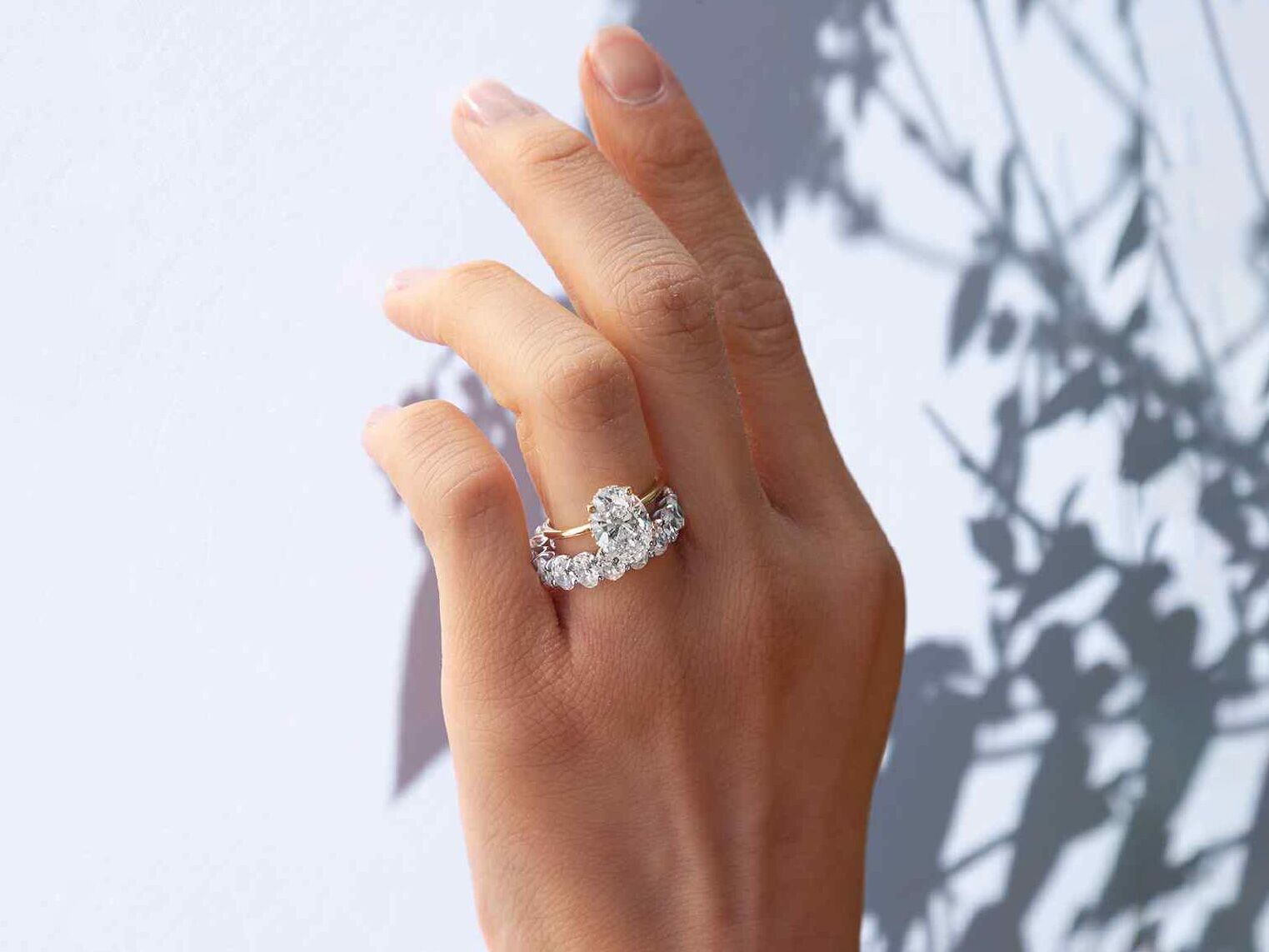Diamond vs moissanites are two popular choices when it comes to selecting gemstones for jewelry. While both possess stunning beauty, they differ significantly in their composition, properties, and value. Let’s dive into the details to understand the distinctions between these two gemstones and help you make an informed decision for your next jewelry purchase.
Introduction
What are diamonds and moissanites?
Diamonds are naturally occurring gemstones formed deep within the Earth’s crust under immense pressure and heat over millions of years. They are renowned for their hardness, brilliance, and rarity, making them highly coveted in the jewelry industry.
Moissanites, on the other hand, are lab-created gemstones initially discovered in meteorites. While natural moissanites are exceedingly rare, most available today are synthesized in laboratories to mimic the characteristics of diamonds at a fraction of the cost.
Composition and Properties
Diamonds
- Natural Formation: Diamonds are formed from carbon atoms arranged in a crystal lattice structure deep within the Earth’s mantle.
- Hardness and Durability: Diamonds rank as the hardest naturally occurring substance, scoring a perfect 10 on the Mohs scale of mineral hardness.
- Clarity and Brilliance: Their exceptional clarity and ability to refract light result in unparalleled brilliance and sparkle.
Moissanites
- Synthetic Creation: Moissanites are created in controlled laboratory environments using silicon carbide crystals, replicating the natural process but at an accelerated rate.
- Hardness Comparison with Diamonds: Although not as hard as diamonds, moissanites rank high on the Mohs scale with a rating of 9.25, making them durable enough for everyday wear.
- Optical Properties: Moissanites exhibit similar brilliance and fire to diamonds, with a dispersion that exceeds that of diamonds, creating captivating flashes of color.
Cost Comparison
The cost disparity between diamonds and moissanites is substantial. Factors such as rarity, demand, and marketing influence diamond prices, often making them significantly more expensive than moissanites of comparable size and quality.
Moissanites, being lab-created gemstones, are more affordable due to their controlled production process and abundant availability. This makes them an attractive option for those seeking the beauty of a diamond without the hefty price tag.
Environmental Impact
Diamond Mining and Sustainability Issues
The mining of lab grown diamonds has raised concerns regarding environmental degradation, habitat destruction, and social conflicts in regions where they are extracted. Additionally, the carbon footprint associated with diamond mining and transportation contributes to environmental concerns.
Moissanite’s Eco-Friendliness
In contrast, moissanite production has a comparatively lower environmental impact. Since they are synthesized in laboratories, moissanites do not require extensive mining efforts, reducing the strain on natural ecosystems and minimizing the carbon footprint associated with their production.
Ethical Considerations
Conflict Diamonds
The issue of conflict diamonds, also known as blood diamonds, remains a significant ethical concern in the diamond industry. These diamonds are mined in war zones and sold to finance armed conflicts, often resulting in human rights abuses and environmental devastation.
Ethical Sourcing of Moissanites
Moissanites offer a more ethically sound alternative, as their lab-created nature ensures transparency and traceability throughout the supply chain. Consumers can have peace of mind knowing that their purchase does not contribute to unethical practices or human suffering.
Color and Brilliance
Diamond Color Grading
Diamonds are graded based on their color,diamond vs moissanites, with the most prized stones exhibiting a colorless or near-colorless appearance. The absence of color allows for maximum light reflection, enhancing their brilliance and fire.
Moissanite’s Color Spectrum
Moissanites possess a unique color spectrum, with most stones exhibiting a slight yellow or green tint under certain lighting conditions. While some prefer the colorless look of diamonds, others appreciate the subtle hue variations found in moissanites, which can add character to the stone.
Cultural Significance
Traditional Association with Diamonds
Diamonds have long been associated with love, commitment, and luxury in various cultures around the world. They symbolize enduring strength and purity, making them a popular choice for engagement rings and other sentimental jewelry pieces.
Rising Popularity of Moissanites
In recent years, moissanites have gained traction as a viable alternative to diamonds, especially among cost-conscious consumers and those concerned about ethical and environmental issues. Their affordability and eco-friendly attributes have contributed to their growing popularity in the jewelry market.
Maintenance and Care
Cleaning and Upkeep of Diamonds
Diamonds require regular cleaning and maintenance to preserve their brilliance and sparkle. Simple methods such as soaking them in warm, soapy water and gently scrubbing with a soft brush can help remove dirt and grime accumulated over time.
Maintenance Requirements for Moissanites
Similarly, moissanites benefit from regular cleaning to maintain their luster and shine. Since they are relatively resistant to scratches and abrasions, cleaning with mild soap and water or a commercial jewelry cleaner is usually sufficient to keep them looking their best.
Customization and Design
Diamond Customization Options
Diamonds offer endless customization possibilities, allowing buyers to choose from various shapes, cuts, and settings to create a unique piece of jewelry that reflects their personal style and preferences.
Design Flexibility with Moissanites
Moissanites also offer versatility in design, with a wide range of shapes and sizes available to suit different tastes and budgets. Their affordability makes them an excellent choice for elaborate designs without breaking the bank.

